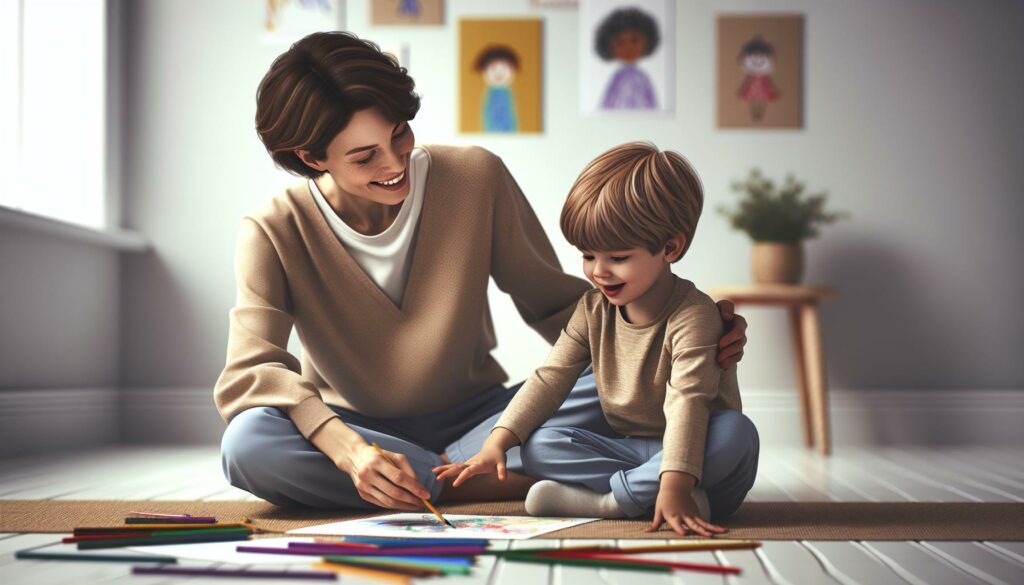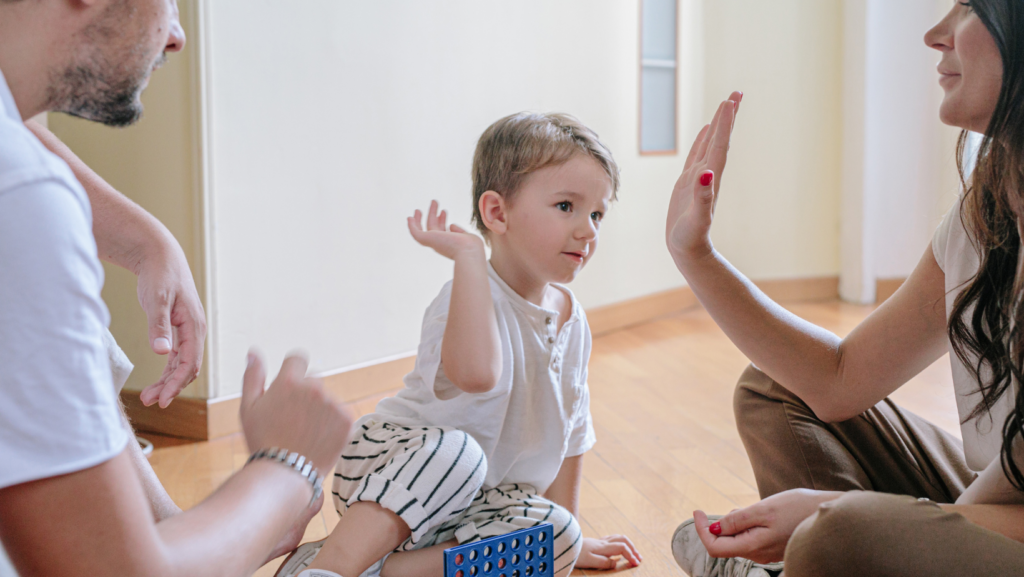”
Parenting a child with Reactive Attachment Disorder (RAD) can feel overwhelming, but you’re not alone. I know firsthand how challenging it can be to navigate the complexities of attachment issues while trying to foster a loving and stable environment. Understanding the unique needs of these children is crucial for building healthy relationships and promoting emotional well-being.
In this article, I’ll share practical tips that can make a significant difference in your parenting journey. From establishing routines to creating a nurturing space, these strategies aim to help you connect with your child on a deeper level. Let’s explore ways to support your child’s emotional growth and strengthen your bond, ensuring a brighter future for both of you.
Key Takeaways
- Understanding RAD: Reactive Attachment Disorder impacts a child’s capacity to form healthy emotional connections, with symptoms such as avoidance of attachment, aggressive behavior, and trust issues.
- Establish Trust and Safety: Creating an environment with clear expectations and consistent emotional responses fosters trust and security in children with RAD.
- Implement Consistent Routines: Structured daily schedules reduce anxiety and provide stability for children, helping them understand what to expect and promoting emotional regulation.
- Effective Communication: Use simple language, maintain a calm tone, and validate feelings to enhance understanding and connection, facilitating better interactions with your child.
- Foster Emotional Connections: Engage in bonding activities like art projects and cooking to strengthen relationships, while encouraging emotional expression through tools like emotion cards and regular check-ins.
- Seek Professional Support: Don’t hesitate to consult a therapist if behavioral issues disrupt daily life, as various therapeutic approaches can significantly aid a child’s emotional development.
Reactive Attachment Disorder Parenting Tips
Reactive Attachment Disorder parenting tips affects a child’s ability to form healthy emotional bonds. Understanding its nuances helps me provide better support.
Definition and Symptoms
Reactive Attachment Disorder parenting tips manifests in children who struggle with emotional regulation and relationship-building. Symptoms include:
- Avoidance of Attachment: Children exhibit reluctance to seek comfort from caregivers.
- Aggressive Behavior: Some display outbursts towards others, indicating distress.
- Difficulty with Trust: A lack of trust in adults often leads to isolation.
- Inconsistent Emotions: Mood swings may occur, attributed to emotional insecurity.
- Blunted Affective Response: Some children show little emotional expression even in positive situations.
Recognizing these symptoms enables me to respond appropriately and create a supportive environment.
Causes and Risk Factors
Several factors contribute to the development of Reactive Attachment Disorder parenting tips. These include:
- Neglect or Abuse: A history of neglect, physical, or emotional abuse increases the risk.
- Frequent Changes in Caregivers: Multiple caregivers or unstable living situations disrupt attachment.
- Parental Mental Health Issues: Conditions like depression or substance abuse can hinder a parent’s ability to connect.
- Premature Birth or Low Birth Weight: Early trauma can impact emotional development.
- Lack of Consistent Care: Inconsistent caregiving creates confusion and insecurity in children.
Identifying these causes helps me understand the child’s behavior and build a strong relationship.
Parenting Approaches for Reactive Attachment Disorder
Understanding and implementing effective parenting approaches helps foster a sense of trust and safety for children with Reactive Attachment Disorder (RAD). These strategies support their emotional well-being and enhance the parent-child relationship.
Establishing Trust and Safety
Creating an environment of trust requires consistency and predictability. I establish clear expectations and follow through with promises, which builds reliability. I also use calm, soothing tones during interactions to help my child feel secure. Engaging in active listening shows that I value their feelings and experiences. Recognizing small positive steps in their behavior reinforces trust, encouraging further connection.
In instances where distress arises, I remain calm to model appropriate emotional responses. Providing physical comfort, such as gentle hugs, can be vital in reassuring my child. Establishing safe spaces where they can retreat builds a sense of safety, allowing them to process emotions away from overwhelming situations.
Consistent Routines and Structure
Consistent routines lend stability, essential for children with RAD. I create structured daily schedules that outline activities, meals, and bedtime, making expectations clear. This predictability reduces anxiety and confusion. I also incorporate transitional cues, signaling upcoming changes, to help my child prepare mentally.
Involving my child in setting up routines fosters a sense of control and engagement. I encourage them to indicate preferred activities, allowing for minor adjustments while maintaining overall structure. Reinforcement of positive behavior during routines strengthens adherence and provides an opportunity for connection. This structured environment supports emotional regulation, essential for children with RAD.
Effective Communication Strategies
Effective communication forms the backbone of a solid parent-child relationship, especially for children with Reactive Attachment Disorder. Implementing tailored approaches can significantly enhance understanding and connection.
Verbal Communication Techniques
- Use Simple Language: I choose clear and concise words that reduce confusion. Children with RAD often struggle with complex instructions, so keeping it straightforward is vital.
- Be Supportive: I validate my child’s feelings and experiences. Acknowledge their emotions even when they seem irrational, promoting open dialogue.
- Ask Open-ended Questions: I encourage my child to express themselves by using questions that require more than yes or no answers. This fosters conversation and helps them articulate their feelings.
- Maintain a Calm Tone: I keep my voice steady and soft, minimizing agitation during discussions. This reinforces a safe space for my child to share.
- Set Clear Expectations: I clearly communicate rules and consequences. Understanding what’s expected helps my child feel secure and reduces anxiety.
- Maintain Eye Contact: I ensure eye contact while conversing. This reinforces attention and shows my child they have my full focus.
- Use Positive Facial Expressions: I smile and exhibit warmth through my expressions. Positive non-verbal cues promote a feeling of safety and acceptance.
- Observe Body Language: I pay attention to my child’s body language for cues. This helps me gauge their feelings and respond appropriately.
- Offer Physical Comfort: I utilize hugs or gentle touches when suitable. Physical reassurance can provide comfort and a sense of connection.
- Be Present and Engaged: I prioritize being fully present during interactions. Eliminating distractions demonstrates commitment and respect for my child’s emotions.
Building Emotional Connections
Establishing strong emotional connections with children who have Reactive Attachment Disorder (RAD) is essential for their development. Fostering these bonds requires intentionality and tailored approaches.
Bonding Activities
Engaging in bonding activities creates opportunities for connection. Choose activities that the child enjoys, whether it’s art projects, outdoor play, or cooking. Here are effective options:
- Art Projects: Crafting together encourages creativity and dialogue. Create a scrapbook to document memories, allowing the child to express feelings visually.
- Nature Walks: Exploring nature allows for relaxed interactions. Use the environment to spark curiosity and encourage conversations about plants, animals, and even feelings.
- Cooking Together: Involve the child in meal preparation. Cooking reinforces teamwork and can be a fun way to connect while discussing favorite foods and flavors.
- Reading Together: Choose storybooks that resonate with the child’s experiences. Discuss characters and scenarios, promoting emotional awareness and empathy.
- Board Games: Play games that require teamwork or strategy. These activities teach patience and cooperation, enhancing trust in a low-pressure setting.
Encouraging Emotional Expression
Promoting emotional expression supports the child’s ability to connect and communicate. Create an environment that values openness. Implement these strategies:
- Validate Feelings: Consistently acknowledge the child’s emotions, ensuring they feel heard and understood. Use phrases like “”I see you’re upset”” to show empathy.
- Use Emotion Cards: Provide visual aids, like emotion cards, to help identify and articulate feelings. Discuss each emotion to enhance emotional vocabulary.
- Art and Journaling: Encourage doodling or writing in journals as a means to process emotions. Offer prompts to guide their thoughts and reinforce the habit of reflection.
- Role-Playing: Use role-playing scenarios to practice expressing feelings. This technique can help the child enact different emotions in a safe space.
- Set Aside Regular Check-Ins: Schedule one-on-one time dedicated to discussing thoughts and feelings. Use these moments to strengthen trust and understanding.
These strategies contribute to stronger emotional connections, enhancing the relationships with children who experience RAD.
Seeking Professional Support
Seeking professional support plays a vital role in effectively managing Reactive Attachment Disorder (RAD). Understanding the nuances of RAD often requires guidance from experienced mental health professionals.
When to Consult a Therapist
Consult a therapist when behavioral issues significantly impact daily life. Signs that indicate it’s time to seek help include persistent aggression, severe withdrawal, or inability to form stable relationships. If I notice extreme emotional fluctuations or my child consistently struggles with basic interactions, professional support is essential. Early intervention fosters healthier coping strategies and emotional regulation.
Types of Therapy for Children
Numerous types of therapy can benefit children with RAD. Common approaches include:
- Attachment-Based Therapy: Focuses on improving attachment relationships through supportive interactions and fostering security.
- Play Therapy: Uses play to express feelings, helping children process experiences in a non-threatening environment.
- Cognitive Behavioral Therapy (CBT): Addresses distorted thinking patterns and promotes healthier behaviors through structured interventions.
- Family Therapy: Involves the entire family to strengthen dynamics and communication, reinforcing support systems.
- Emotionally Focused Therapy (EFT): Teaches children to identify and express emotions effectively, enhancing emotional intelligence.
Utilizing the appropriate therapeutic methods can significantly enhance the emotional growth and stability of children with RAD.
Reactive Attachment Disorder
Parenting a child with Reactive Attachment Disorder presents unique challenges but also offers opportunities for profound connection. By implementing the tips shared in this article, I can create a nurturing environment that supports my child’s emotional growth. Establishing routines and fostering trust through consistent communication are essential steps toward building a strong bond.
It’s crucial to remain patient and understanding while navigating this journey. Seeking professional help when needed can further enhance my efforts and provide valuable insights. Ultimately, the goal is to cultivate a safe space where my child feels loved and secure, paving the way for a brighter future together.
“





